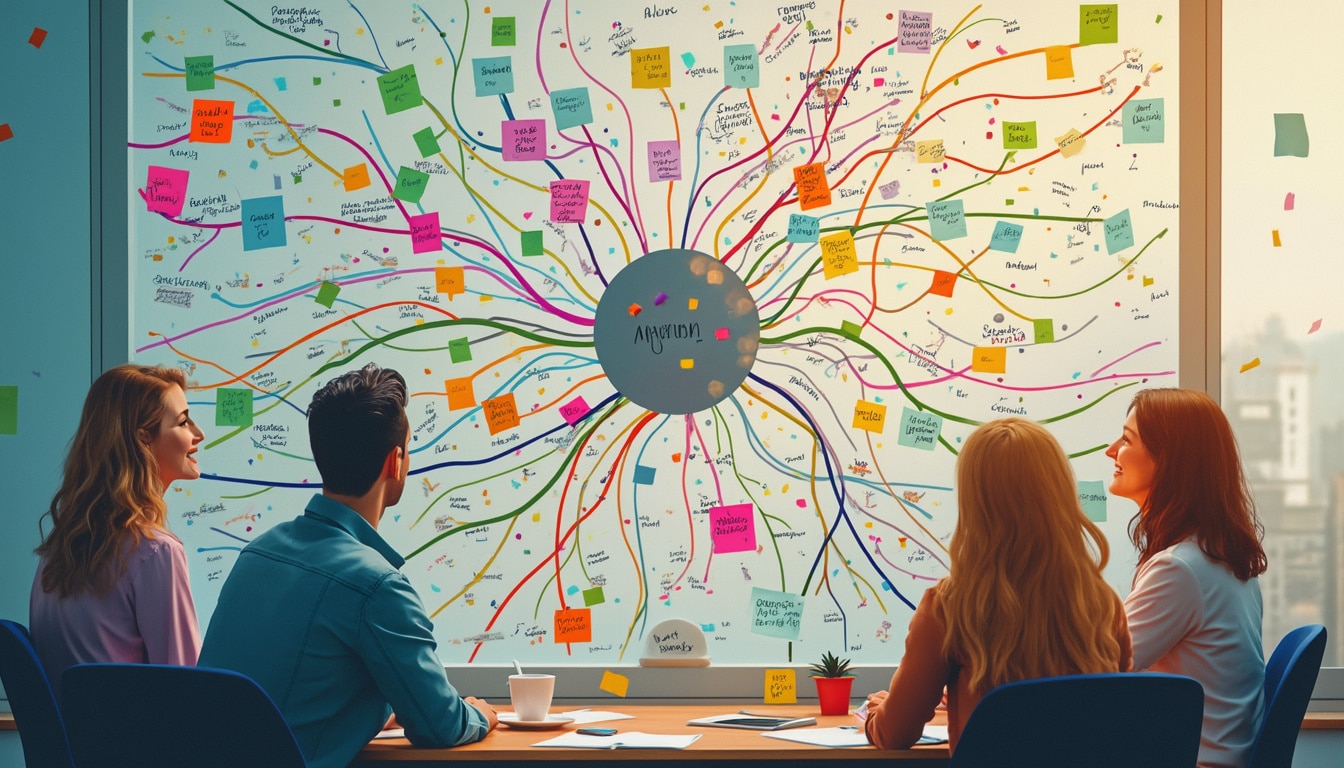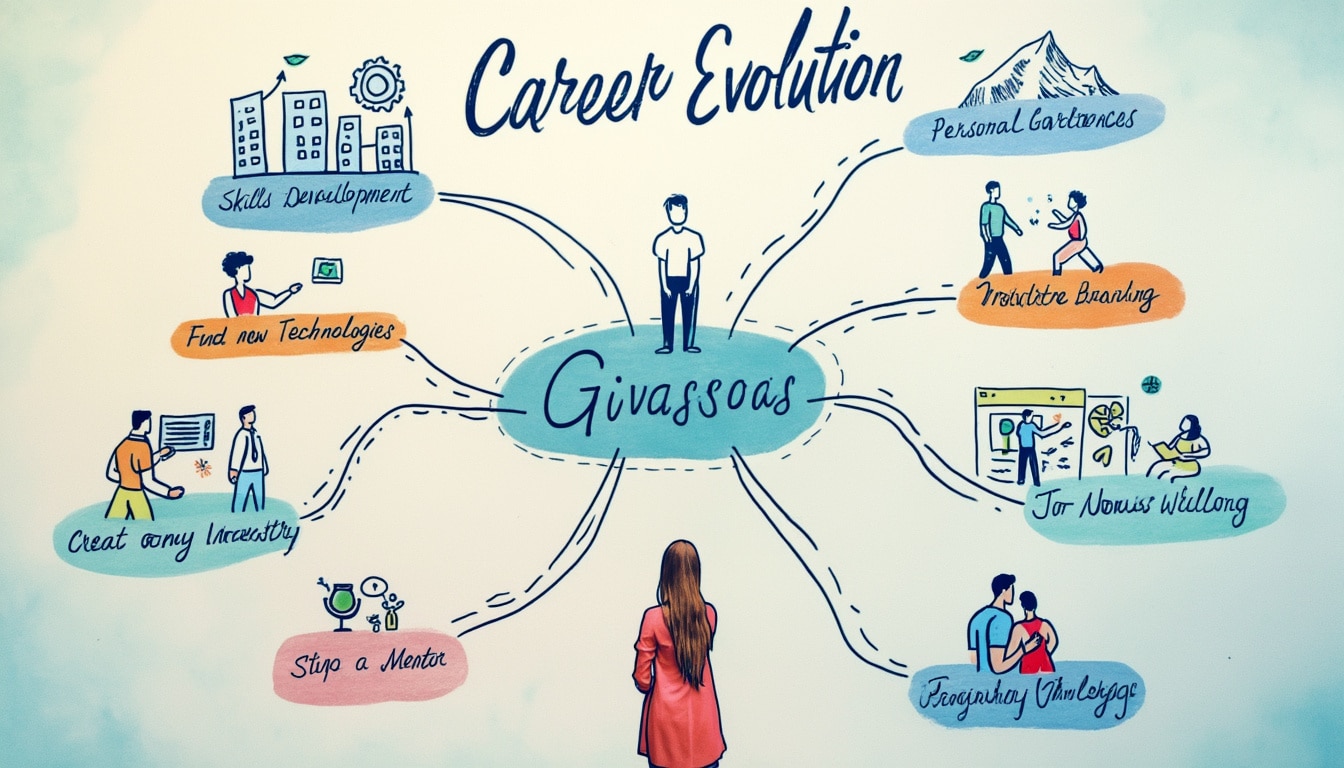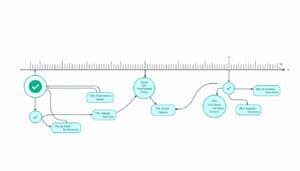Mastering brainstorming is essential for fostering creativity and innovation in all professional fields. Books dedicated to this technique offer valuable tools to structure and optimize your ideation sessions. This article presents a selection of the best works available in 2025, each providing a unique perspective on mind mapping and brainstorming. Whether you are a beginner or an expert, these books will help you develop your skills and maximize your creative potential. By exploring the proposed methods, you will learn how to generate effective ideas and turn them into concrete projects. Discover how these resources can revolutionize your approach to teamwork and problem-solving. Dive into these must-reads to become a true master of brainstorming.
🔥 Nous recommandons Ideamap
Ideamap est l’outil idéal pour un brainstorming ou un projet collaboratif. Grâce son interface facile et à ses fonctions IA, Ideamap booste votre créativité tout en favorisant une meilleure organisation de vos idées pour atteindre vos objectifs.
Mind Map – Draw Me Intelligence by Tony Buzan and Barry Buzan
This iconic book offers a proven method for enhancing memory, creativity, and concentration through mind mapping. The authors explain in detail how to visually structure ideas for better understanding and utilization. By using lists of words organized in a tree structure, it becomes easier to represent complex concepts and develop them effectively. For example, during a brainstorming meeting, a mind map allows for capturing and organizing ideas in real-time, thus facilitating decision-making and problem-solving.
The practical exercises and numerous illustrations in the book help master the technique, even for beginners. The case studies included demonstrate how mind mapping can be applied in various professional and personal contexts. In 2025, Tony Buzan’s principles remain essential for anyone looking to optimize their intellectual and creative capabilities.


Furthermore, publishers such as Éditions Gallimard and Éditions Albin Michel have recognized the value of this work by distributing it widely, thus ensuring its accessibility to an increasingly broad audience. The techniques described not only allow for the structuring of ideas but also for their dynamic visualization, thus facilitating communication and collaboration within teams.
The Mind Mapping Toolkit by Xavier Delengaigne and Marie-Rose Delengaigne
This comprehensive resource offers 72 mind mapping tools to use daily, providing a variety of options for structuring and organizing ideas. Each tool is presented in a concise and practical manner, with summary diagrams and methodological tips. Whether for note-taking, problem-solving, or project management, this book covers a multitude of professional and personal situations.

The authors, with the support of Éditions Dunod and Éditions Larousse, designed this work to be an accessible and easy-to-use reference. For example, a manager can use these tools to plan a team strategy, while a student can enhance their graphic note-taking techniques. The recommended visual tools stimulate creativity playfully, making the ideation process more engaging and effective.

Additionally, the book includes a case study that illustrates how these tools can transform a simple brainstorming session into a structured and productive process. The illustrations created by Marie-Rose Delengaigne add an attractive visual dimension, facilitating the understanding and adoption of the recommended techniques.
Boost Your Professional Journey with Mind Mapping by Joëlle Planche Ryan and Stéphanie Vasen
In a constantly evolving professional world, this book offers strategies to enhance employability and manage one’s career proactively through mind mapping. The authors demonstrate how to use this technique to assess one’s professional situation, identify strengths and weaknesses, and plan the next steps. For example, a professional transitioning in their career can use a mind map to visualize their skills, aspirations, and available opportunities.

Éditions Le Pommier and Éditions Bréal published this work to meet the needs of professionals looking to take control of their career trajectory. The book includes practical advice for creating a personal brand, optimizing online presence, and positively influencing others’ perceptions. Examples drawn from real cases illustrate how mind mapping can be a powerful tool for navigating the various phases of a career, whether for a recent graduate or an experienced professional.

In 2025, the ability to reinvent oneself and adapt quickly is more crucial than ever. This book offers concrete solutions to use mind mapping to enhance your professional journey and achieve your goals effectively and structurally.
Develop Your Intelligence with Mind Mapping by Tony Buzan
Another masterpiece by Tony Buzan, this book focuses on the intellectual aspects of mind mapping. It explores the origins of mind mapping and explains why this method is so effective in stimulating intelligence, creativity, and concentration. For example, a student can use mind mapping to prepare for exams, while an entrepreneur can use it to structure ideas and plan new projects.

Distributed by Éditions J’ai Lu and Éditions Studyrama, this book offers illustrated step-by-step techniques for creating mind maps, suitable for both beginners and advanced users. The advice for boosting creativity, improving memory, and structuring ideas is particularly useful in a professional context where innovation and productivity are key success factors.
By integrating these techniques into your daily routines, you can significantly enhance your ability to solve problems and persuade your interlocutors. This book is an indispensable resource for anyone looking to develop their intelligence in a holistic and sustainable way.
The MapWriting Method – Succeed in All Your Writings with Mind Mapping by Xavier Delengaigne and Franco Masucci
Specifically designed to improve writing skills, this book introduces the MapWriting method, a precise approach to organize and structure ideas before transcribing them into writing. Whether you are an author, journalist, or student, mind mapping helps you produce clear and coherent writing. For example, a writer can use this method to structure their novel, while a student can prepare better-organized essays.
Éditions de l’Atelier published this guide to meet the needs of writing professionals. The book includes various visual tools and practical advice to maximize the effectiveness of your writing sessions. Franco Masucci, as a mind mapping trainer, brings valuable expertise by sharing specific techniques to unlock creativity and facilitate the writing process.

In 2025, mastering writing is essential in many fields. By adopting the MapWriting method, you can transform your ideas into well-structured and impactful texts, thereby increasing the impact of your writing. Discover more advanced techniques on this page to enrich your mind mapping practice.
FAQ
What are the benefits of mind mapping in brainstorming?
Mind mapping allows for visually structuring ideas, thus facilitating their generation and organization. It fosters creativity by providing an overview and stimulating connections between different ideas.
Which books do you recommend for starting with mind mapping?
For beginners, Mind Map – Draw Me Intelligence by Tony Buzan and Barry Buzan is an excellent introduction. It offers solid foundations and practical exercises to master the technique.
How can mind mapping help in a professional career?
Mind mapping helps to plan and organize professional goals, improve communication, and structure complex projects. Works like Boost Your Professional Journey with Mind Mapping offer specific advice on applying these techniques in the workplace.
Are there online resources to accompany these books?
Yes, many books include links to online resources. For example, you can find explanatory videos and examples of mind maps on platforms like YouTube or specialized blogs.
What is the difference between mind mapping and traditional note-taking?
Mind mapping is a visual method that organizes ideas in a non-linear fashion, thus fostering creativity and memorization. In contrast, traditional note-taking follows a linear structure, which can limit the ability to see connections between ideas.











